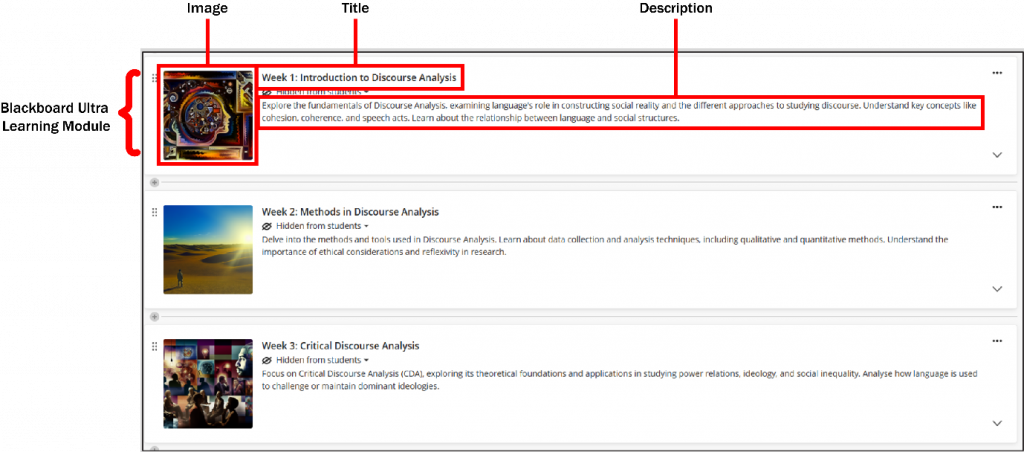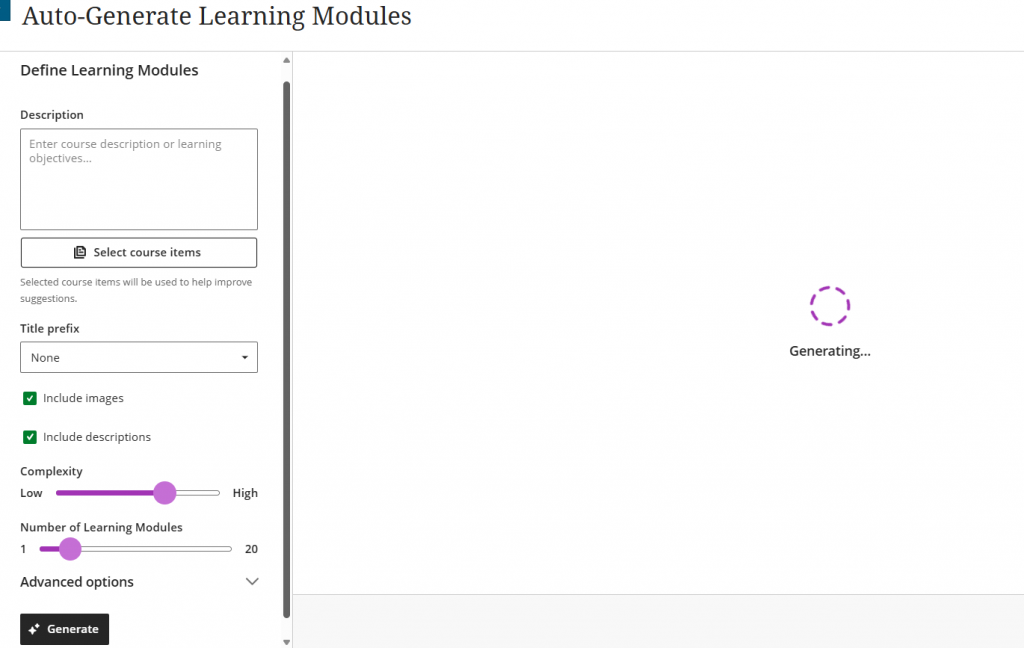Staff Guide: Find out what Blackboard’s AI Design Assistant offers you, and which tools are currently available at the University.
What is the Blackboard Artificial Intelligence (AI) Design Assistant
Blackboard have partnered with Microsoft to develop a suite of AI tools to support course content creation, assessment, Instructor efficiency and student engagement. These tools are collectively known as the Blackboard AI Design Assistant and include:
- Test questions and Assignment prompt suggestions: Easily generate test questions and other assessment tasks aligned with Bloom’s Taxonomy, and course content.
- Rubric generation: Create a structured framework to assess student work based on insights from the course context.
- Discussion and Journal topic generation: Generate prompts to promote engagement and reflection. You can specify the cognitive level, complexity, and base suggestions on your description and course items.
- AI Converstations:You can create AI Conversations around a topic or scenario to engage your students. AI Conversations include socratic questioning and role-play exercises.
- Generate Document Layouts: Design attractive layouts for Documents that include images, knowledge checks, and helpful headings using your existing text.
- Course structure suggestions: The AI Design Assistant can guide you through building the course structure by suggesting and creating Learning Modules based on the course title, your description, and the desired level of complexity.
Responsible AI in Blackboard
As a university-supported tool, Blackboard has institutional safeguards in place to make sure your educational content is protected, this includes the use of the AI design assistant. Blackboard prioritises lawful, ethical and responsible use of AI and has established a set of trustworthy AI principles that focus on putting people in control. As the subject matter expert, you have complete control over what you choose to add to your course.
Design Assistant tools currently live at the University of Southampton
The AI tools will be rolled out at the University over time. We will publish guides for live tools below.
AI Structure Generator
The AI structure generator suggests options for the image, title and descriptions of the learning modules that make up your course. You can choose to use any or all of these outputs.
To access the AI Structure Generator, in the Course content area, select the add content button (purple plus) and then select the two stars icon (auto-generate modules).

The generated learning modules are based on the information you provide in the description box and/or through selected course items. You can choose how much information to provide and which setting you want to use. This will affect the output produced by the AI.

Features
When you select auto-generate modules you will see the following screen, showing the features of the tool:

- The description box allows you to provide information about your course to help the AI produce relevant learning modules. For example you could include information about the subject of the course.
- Select course items allows you to provide the AI with relevant documents from your Blackboard Ultra course. The AI will then ‘read’ these items and use that information to generate learning modules. For example you could select the course handbook.
- Prefix allows you to decide how the learning modules are categories. For example, weekly content.
- There are two tick boxes that allow you to decide whether the AI generates an image and/or a description for each learning modules.

- The complexity slider allows you to indicate the level of study you are creating the modules for. There are ten levels of complexity for AI-generated content; levels 7-10 are appropriate for university-level courses:
- The number of learning modules slider allows you to decide how many learning modules you want the AI to generate.
Once you are happy with the settings, select generate:

Once generated you will see a notice to check the content for accuracy and bias. Every time you select generate the AI will produce a new set of learning modules that you should check.
Any generated content you wish to use can be added to your course. Select the the individual learning modules that you wish to add and then select the add to course button.
To generate a new image select the refresh button. If you wish to edit the titles or descriptions that have been generated you first have to add that learning module to your course.
